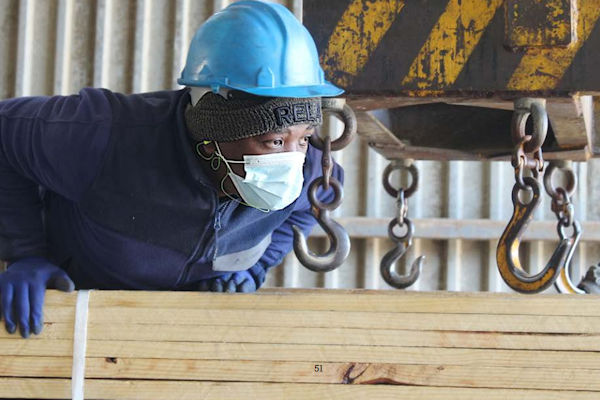Pressure Points Understanding FSC Pesticide Communication In Timber Processing
Pressure Points Understanding FSC Pesticide Communication In Timber Processing

As forest certification standards evolve, the entire forestry value chain - from seedling to sawmill - is being pushed toward greater transparency and sustainability. One recent source of discussion has been the FSC Pesticides Policy (FSC-POL-30-001 V3-0) and what it means for third-party timber processing plants, particularly those involved in preser vative treatment of poles and sawn timber.
At the heart of this conversation lies a key question: Are timber treatment chemicals used in pole plants and sawmills, subject to FSC’s list of prohibited pesticides?
Informing, Not Enforcing Clause 4.12.12 of the FSC Pesticides Policy requires certified forest managers to:
“Inform third-party processing plants of the list of FSC prohibited chemical pesticides, encouraging them to avoid these pesticides in their processes and request a list of such pesticides in use.”
This clause is part of FSC’s broader aim to encourage sustainability beyond the forest boundary. However, it’s important to clarify that forest managers are not expected to enforce pesticide restrictions on downstream partners. Instead, their role is to engage, inform and document the flow of certified material through the value chain.
PROCESSING PLANTS AND THE PESTICIDE QUESTION
Processing facilities under the South African Wood Preservers Association (SAWPA) and the South African Utility Pole Association (SAUPA) - such as pole treatment plants and timber processors - have raised a valid and important clarification: the substances used in timber preservation, such as creosote or copper chrome arsenate (CCA), do not strictly fall under FSC’s definition of pesticides.
While there may be some overlap in chemical classification, FSC defines pesticides specifically as substances intended to control, destroy, or repel pests during forest operations, not necessarily those used in post-harvest preservation or timber treatment.
Furthermore, both SAWPA and SAUPA have confirmed that their member facilities are fully compliant with South African legal requirements, including regulations under national environmental legislation and SANS standards. With the continued tightening of local chemical regulations, this legal compliance forms a robust foundation for responsible practice in timber treatment.
A GREY AREA WITH ROOM FOR COLLABORATION
This intersection between FSC policy and timber treatment remains somewhat of a grey area. While FSC’s Chain of Custody (CoC) standards do not regulate pressure treatment or restrict the use of treatment compounds, the Pesticides Policy still encourages voluntary avoidance of high-risk substances and a clear line of communication across the supply chain.
That’s why forest managers are required to inform their processing partners, provide the FSC Prohibited Pesticides List, and request transparency around any substances being used, not as an enforcement mechanism, but as a demonstration of due diligence and commitment to sustainability.
STRENGTHENING THE CHAIN THROUGH DIALOGUE
This is not a case of overreach or misinterpretation - it’s a recognition that every stage of the forestry value chain has a role to play in sustainability. Forest managers are accountable for initiating the conversation; processing plants, in turn, are encouraged to respond transparently and confidently, which both SAWPA and SAUPA members have done.
In this case, the high standard of legal compliance already upheld by SAWPA and SAUPA members goes a long way to fulfilling the spirit of FSC’s policy, even where the specific chemicals in use are not directly governed by it.
FINAL THOUGHTS
The treatment and preservation of timber - especially utility poles and structural products - is a critical part of the Forestry Sector. SAWPA and SAUPA member plants operate with a strong commitment to legal compliance and product stewardship.
Forest managers can meet their FSC obligations by simply engaging with these partners, sharing the FSC Pesticides Policy, and documenting their outreach. In return, processors can confidently demonstrate their responsible practices, strengthening the credibility of South Africa’s forestry value chain from root to roof.
In a sector where standards and expectations are evolving rapidly, collaboration will always be the strongest preservative.
Written By: Jacqui Meyer, TIPWG Coordinator
Source: Forestry In Focus
























